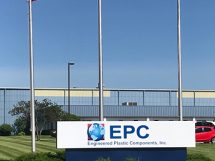By Jim Kramer

Computer upgrades can be expensive. At least, that’s what I hear. At the risk of dating myself, my first computer was running Windows 1.0 (yes, that is old), and even in 1986 dollars, it was more expensive than the tablet I use today. Perhaps, then, we should consider: What is the true cost of updating, and what technologies need to be updated?

First, consider upgrades versus an equipment refresh. With low-cost RAM and solid-state drives, there are some pretty significant updates available that may justify performing updates instead of replacements. When do upgrades make sense, and when does a new computer trump an upgrade?
In years past, the average life expectancy of a computer was over five to seven years. Because of the increasingly fast rate of change, that timeline has condensed to three years, and sometimes even less. PCs are becoming disposable and often need to be cycled frequently.
While many small businesses hold on because “it still works,” in the world of large enterprises, we normally see a three-year refresh cycle. That isn’t because they have too many people in their IT department with nothing else to do. It is because a three-year life cycle is the most cost-effective solution.
So, what are some of these hidden costs to older computers? First is data loss. As equipment ages, there is a higher probability of failure. The slower speed often leads to fewer restore points, and the restoration of data is often slower.
Productivity is the biggest cost. What are a few seconds here and there worth? Something as simple as the power-up time of a PC can mean the difference between an employee powering up the unit to accomplish a few tasks between meetings, or a few minutes of idle chatter. Just 10 minutes a day of added productivity equates to over 43 hours of additional work each year. How much would a week of salary cost? You may have just paid for the new PC. And that doesn’t include the time it takes to power on an old PC versus a new Windows 10 tablet.
There also are accuracy concerns as minds wander while constantly waiting for the next screen to appear. As an IT consultant, it would be interesting to know how many hours I have billed over the years that were spent simply waiting for old computers to react and load software.
This is not just a computer issue. Old servers can slow down workflow, and if the systems are too old, spare parts may not be available if there is a failure. In addition to speed issues, security risks are real at the network level. It is critical to ensure that the firewall and network devices (including phones) are up to date.
At what point do these costs overtake the purchase price? According to a recent Microsoft study, it is in the fourth year. Depending on the business and how the computer is used, most companies cross the threshold where it costs more money to maintain the network than it would cost to replace it during the fourth year. The cost of repairs and lost productivity make it cheaper to replace the computers than to continue using them.
So how does a business stay in front of technology? First and foremost, you need a three-year rotation plan for PCs and a four-year rotation plan for servers and network equipment. This will ensure the one-time cost isn’t prohibitive and equipment is being maintained properly. Another option that can move expenses from capital expenditures to operating expenditures is to research Hardware as a Service (HaaS), which also allows the business to move the liability to the vendor for updated equipment.
Every business is different, but one thing to remember is that technology is moving faster than ever, so we need to ensure we have the proper tools for our teams. Technology can either give us a competitive advantage or it can be a line-item expense. Just make sure you are totaling all the costs when you leave the old machines in place too long. ■
Jim Kramer is a partner at MCM Kramer Technology Solutions.




















Add Comment